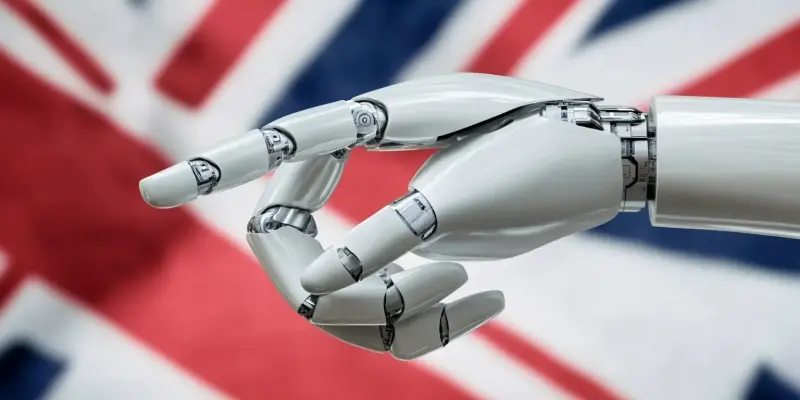Automation has been a central theme in recent festive trading updates from major UK retailers, as they prepare for higher wage bills starting in April due to increased national minimum wage and employers’ national insurance contributions (NICs). This focus on automation aligns with the government’s objective to boost productivity within an industry that has historically relied on inexpensive labor. However, while automation promises efficiency gains, it also brings concerns about the potential displacement of entry-level positions in the UK’s largest employment sector.
Rising Labor Costs and Automation
Retailers’ Response to Increased NICs
When surveyed by the British Retail Consortium about their strategies to cope with the imminent rise in employers’ NICs, nearly one-third of finance directors indicated that they would turn to automation. This response, although significant, ranked behind other measures such as raising prices, cutting head office jobs, and reducing employee working hours. In the quest to maintain profitability, retailers are considering a range of automation technologies to enhance efficiency and productivity.
Key innovations being considered or already implemented include electronic shelf price labels, self-service tills across various retail sectors, and automated returns machines. Electronic shelf labels, for instance, allow prices to be changed with the press of a button, dramatically cutting down the time staff spends managing paper labels. Major retailers like Currys, Sainsbury’s, and the Co-op are either testing or planning to introduce these electronic pricing systems in their stores, signaling a shift towards more streamlined operations.
Expansion of Self-Service Technologies
The expansion of self-service technologies is not limited to supermarkets; it is now making significant inroads into fashion and homewares outlets as well. Retail giants like Primark, Next, Uniqlo, and Zara’s parent company, Inditex, are pioneers in adopting self-service tills that facilitate easier and quicker transactions. Cutting-edge technology is being developed to scan entire baskets of goods using radio frequency identification (RFID) tags, which eliminates the need for customers to scan items individually. Marks & Spencer is also exploring this innovation, particularly for its non-food items, to enhance customer convenience.
In supermarkets, the introduction of hybrid tills able to switch between self-service and staff-operated modes represents a versatile approach to cater to varying customer needs. Larger self-checkout systems suitable for shoppers with full trolleys are becoming more commonplace. As the technology improves, retailers are finding more applications for self-service systems, which not only enhance customer experience but also significantly reduce the need for labor in checkout operations.
Innovations in Retail Automation
Self-Scan Systems and Automated Returns
Self-scan systems, where customers use handheld devices or smartphone apps to scan items as they shop, are gaining traction among UK retailers. For instance, Sainsbury’s has reported that 30% of its grocery transactions were processed through its SmartShop system during the peak festive season, resulting in notable cost savings and expedited checkout processes. This method not only streamlines shopping experiences but also considerably reduces staffing requirements at checkout counters.
Automated returns systems are another innovation being trialed to improve efficiency. These systems allow customers to drop off unwanted items using a QR code, bypassing the need for direct staff involvement. John Lewis, for example, is testing these automated returns machines in several Waitrose stores. Despite the convenience these technologies offer, the notion of entirely unstaffed stores remains contentious. Amazon’s “just walk out” stores, which leverage advanced technology to track purchases and charge customers automatically, have seen limited success, leading to several closures in 2023 and 2024. Tesco and Aldi have also experimented with such models, although on a much smaller scale.
Warehouse Automation and AI Integration
Warehouse operations are witnessing a significant transformation through the adoption of robots and artificial intelligence (AI). Sales of assembly line robots to sectors such as food and beverages, logistics, and consumer goods surged by 31% in the first nine months of the previous year. Autonomous mobile robots, which operate independently of human intervention, are increasingly being integrated into warehouse systems. Retailers like Amazon and John Lewis utilize robots to transport products within warehouses for human packing, enhancing operational efficiency and reducing manual labor.
Further advancements in AI are revolutionizing various aspects of retail management. AI-enabled cameras, for instance, can monitor shelf stocks in real-time and track customer interactions with products. Last year, Morrisons implemented cameras to reorder supplies as necessary. AI is also being used to forecast product demand, schedule labor, develop new products, and create personalized marketing strategies. Sainsbury’s leverages AI for demand forecasting, Waitrose for labor scheduling, M&S for crafting product descriptions and offering style advice, and Tesco for purchasing decisions and optimizing delivery routes. The use of AI in these areas not only augments productivity but also tailors customer experiences based on data insights.
Balancing Efficiency and Employment
Impact on Entry-Level Jobs
Automation has become a key focus in the latest holiday trading updates from major UK retailers. This is largely because they’re preparing for increased wage bills starting in April, thanks to a higher national minimum wage and boosted employer national insurance contributions (NICs). Automating processes is in line with the government’s push to enhance productivity in a sector that has traditionally counted on cheap labor. This shift towards automation is anticipated to improve efficiency significantly. However, it also raises concerns about the potential loss of entry-level jobs within the UK’s largest employment sector, which is retail. Despite the promised efficiency and productivity gains, the concern remains that many jobs, particularly those that are entry-level, may be at risk of disappearing. These developments highlight the ongoing tension between technological advancement and job security, and the retail industry will need to balance these competing interests carefully as they move forward.

